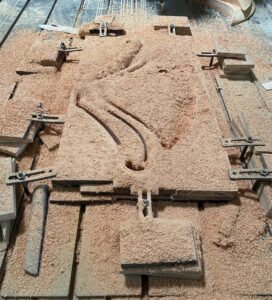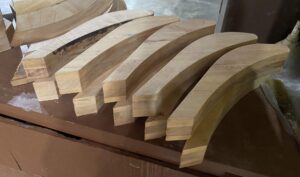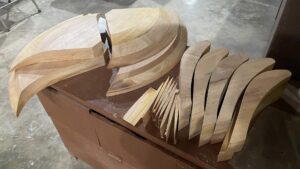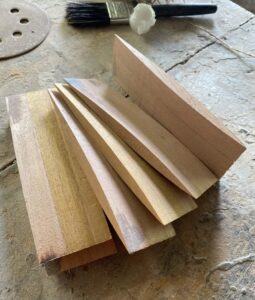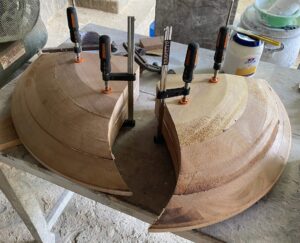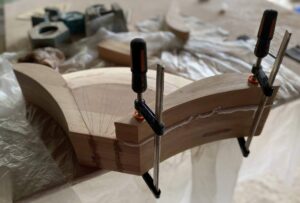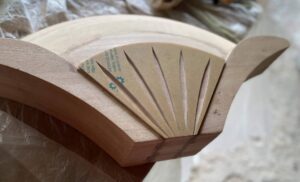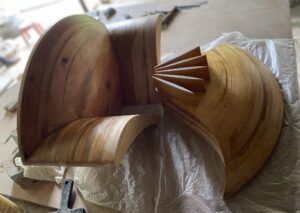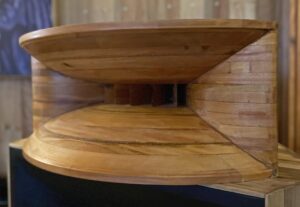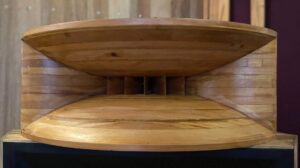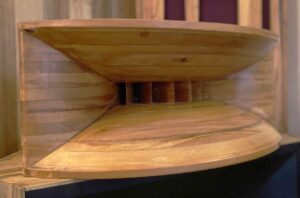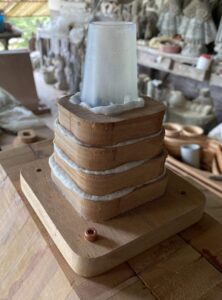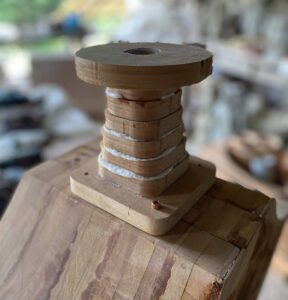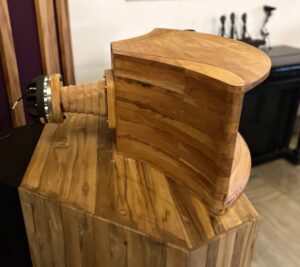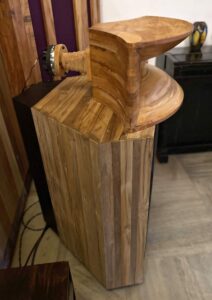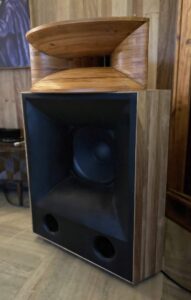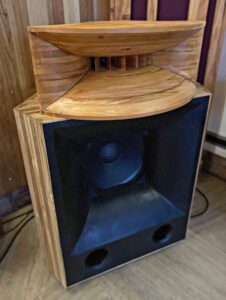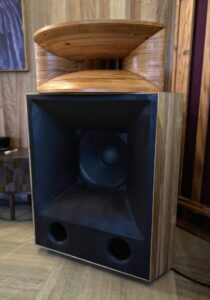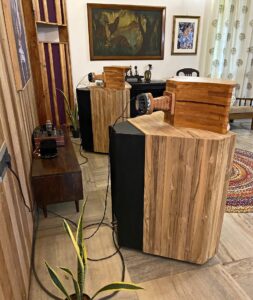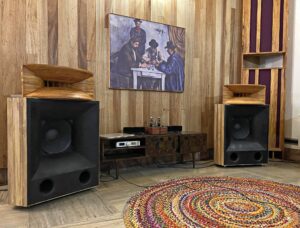Already during the collaboration with @DonVK and @fluid regarding fin horns, I shared some initial drafts of a radial fin horn with almost equal fin path lengths with help of the semicubic parabola. Traditional fin horns have the shortcoming that the path length from outer throat to find end is shorter compared to the center path length because of the radial fin arrangement. I think that it is very important that the wave front beyond the fins sum up coherently or, so to speak, have the same phase. The mk3b2 horn tried to mitigate the issues with respect to different path lengths by a different fin arrangement, with the result that mk3b2′ performance surpass the current available fin horn designs.
Luckily, one of my other interest at that time was to investigate the Bézier algorithm and how to use it in designing horns (Bezier Curve). The result was a complete horn calculator based on Bézier curves. Besides the challenge to implement the math, I learned how to handle the algorithm and also found out that multiple Bézier points with the same coordinates can be used to emphasize certain regions, where the resulting curve should be more close to a distinct point.
In this article I will describe a new algorithm that starts with a slightly curved wave front which is the result of an optimization to fulfill the defined flare rate. So the first incremental step is more or less the same as a general exponential horn. Bézier curves are used to make the fin path lengths equal, ending up with a spherical wave front at fin end which is the theoretical optimum to radiate into a flared conical bell.

